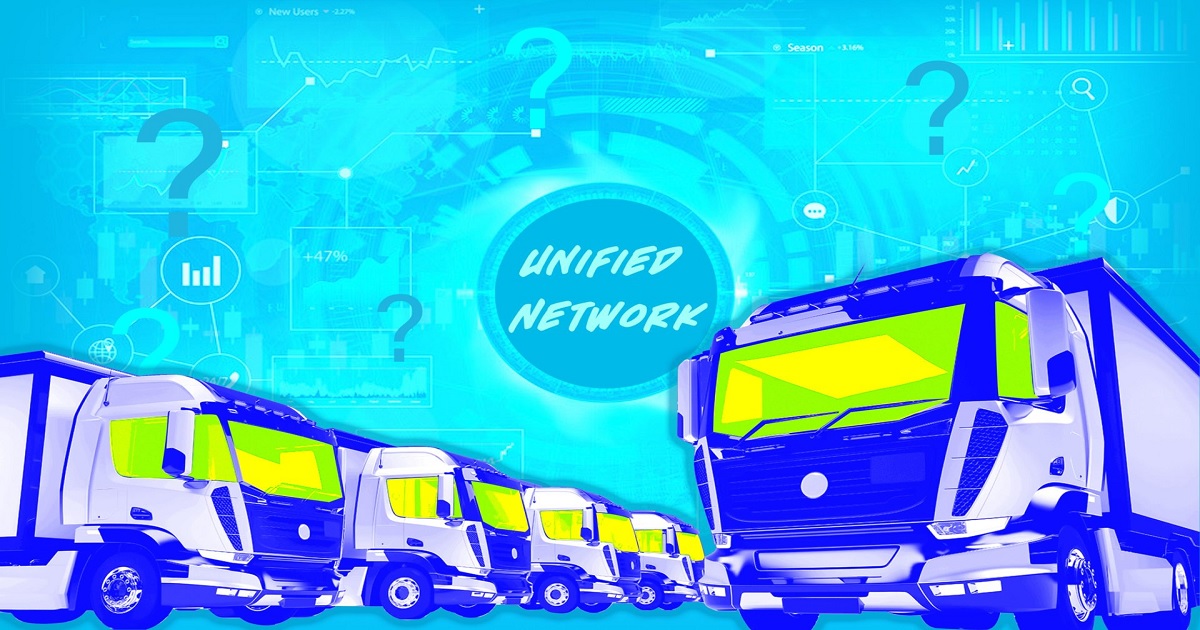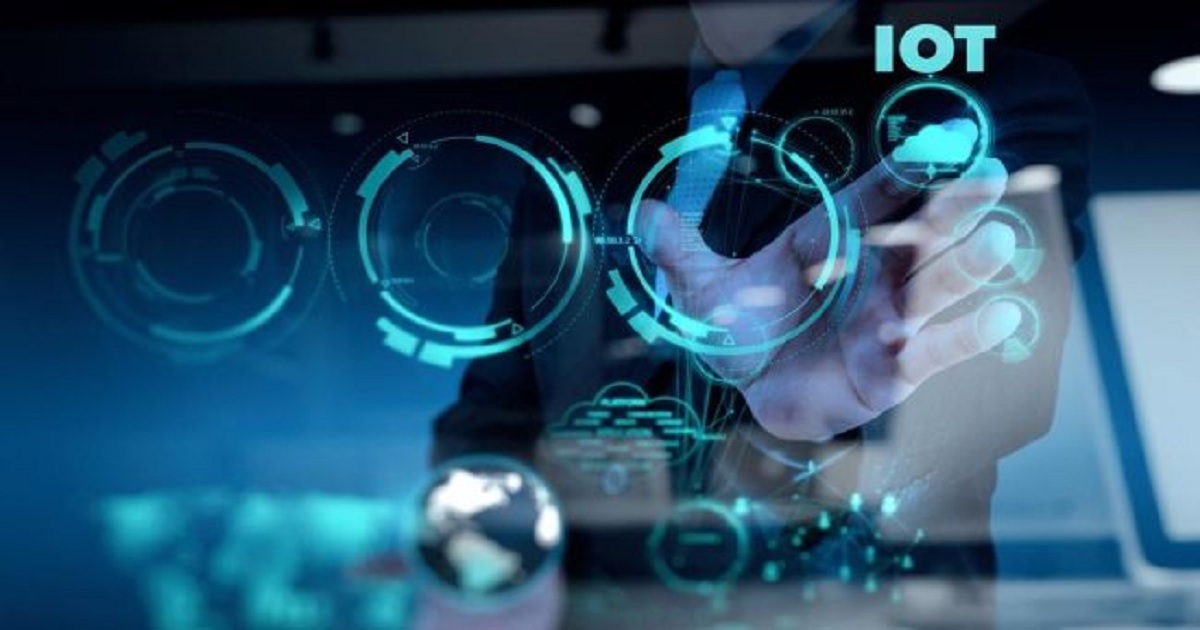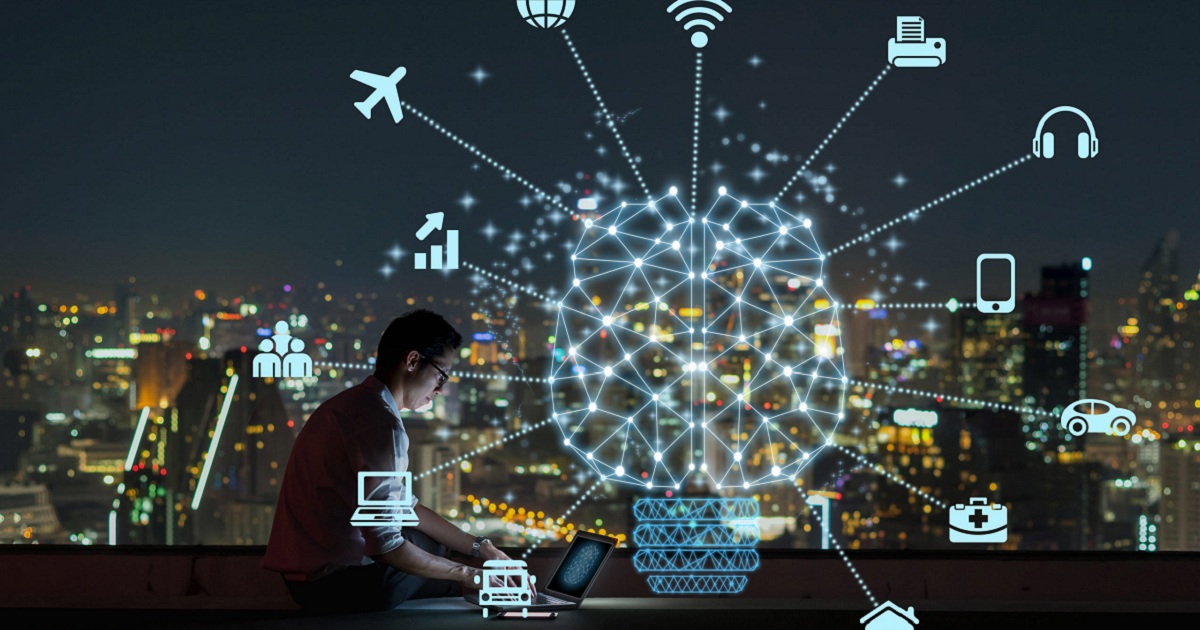
IoT Security
Article | July 5, 2023
Manufacturing industry or the Industrial Internet of Things has been one of the driving verticals for development of 5G technologies. Wide 5G deployement for Industrial IoT has long been in the pipeline but we might expect it to be a reality very soon.
The true success of 5G depends on the verticals as trends suggest that that Industrial IoT alone will triple the number of needed base stations globally. And many verticals will need efficient wireless connectivity to become successful. 5G has features that are specifically designed to address the needs of vertical sectors, such as network slicing and URLLC. The ultra-reliable low latency communications and massive machine type communications required by the IIoT will soon be realized.
Table of Contents:
How Will 5G Impact Industrial IoT?
5G Accelerations for IIoT
Industrial 5G
How Will 5G Benefit Industrial IoT?
IoT is a B2B application and users just want to get actionable data from their sensors and not worry about whether it’s old data or unreliable data. I think 5G changes this dynamic significantly over the long term by standardizing and simplifying the experience and interactions, and possibly engaging more of the industry to help solve IoT’s problems but also improve the total experience.
- Anshel Sag, analyst at Moor Insights & Strategy
• Data-Transfer Speeds
Any IoT is said to be commercially successful depending on how fast it can set up communications with other IoT devices, software based websites or applications, phones, and tablets. 5G promises exactly all of this with significant increase in transfer speeds.
5G is 10x faster than its LTE counterparts and allows IoT devices to communicate and share data faster than ever. All IoT devices will benefit from the faster speed of 5G with reduced lag and improved sending and receiving of data and notifications between connected devices.
• Greater Network Reliability
5G networks also offer more reliable and stable connection which is extremely important for any IoT including devices like locks, security cameras and monitoring systems that depend on real-time updates.
With reliable connectivity consumers will be the greater beneficiary.
It is however, imperative for manufactures to trust and invest in 5G compatible devices to reap the benefits of high-speed connectivity, very low latency, and a greater coverage that will arrive with the next generation network.
READ MORE:How Will the Emergence of 5G Affect Federated Learning?
5G Accelerations for IIoT
• Diversity in Industrial IoT
The opportunities that industrial IoT bring with is varied and its used cases span the spectrum from indoor to outdoor, less demanding to mission-critical, data rate from dozens of bps to gbps, device motion from fixed to mobility, and power source from button battery to high voltage.
Predictive maintenance, smart metering, asset tracking, and fleet management are some of the commonly known opportunities for IIoT, which be extended further by 5G through continued diversity and expansion.
• 5G Inspires Untapped Frontiers
Industrial IoT application areas such as mobile robot control in production automation and autonomous vehicles in open pit mining require wide mobility, low latency and mission-critical reliability. They rely on wireless access at 50ms to 1ms latency and service reliability from 5 nines to 6 nines.
Though 4G/LTE has attempted to address these areas of IIoT application it has failed due to unsatisfactory performance. With ultra-reliable and low latency connection, 5G will take industrial IoT to unconquered spaces.
• Managing the Enterprise 5G Network
Typically, enterprise IT is responding to the business demand from Operational Technology (OT) and mandates security, integration, visibility, control, and compatibility. In this scenario, 5G is not about “what,” but about “how”. IT needs to consider the right approach to bring 5G to the enterprise and decide whether to co-manage with the service provider (SP) or self-manage. The experience of IT in managing Industrial Ethernet and Wi-Fi may not hold when it comes to 5G. IT will likely require OT’s partnership to address complexity, security, integration, and other new challenges that 5G presents.
Industrial 5G
The potential for industrial 5G huge as it enables whole new business models.
Industrial IoT has a core requirement of the ability to connect sensors, devices, software applications, production process, workers and consumers. The connectivity requires to be seamless vertical and horizontal integrations of all layers of automation pyramids that increases operational efficiency of the plant floor and the supply chain by optimal use of data, information and analytics. This can be improved by five key elements:
• Improved Connectivity
• Availability
• Low Latency
• Flexibility
• Speed
Industrial 5G will impact these areas of the manufacturing industry to guide the success of Industrial IoT.
Industrial 5G will play a key role in helping industrial users achieve the goals of Industrial IoT. 5G offers wireless communications services with reduced latency, increased connection density, and improved flexibility compared to the current 4G generation. 5G technology has a theoretical downlink peak speed of 20 Gbps (gigabits per second), which is about 20 times faster than the current generation.
The key is to start building IoT devices with broadly adopted operating systems, built-in security all the way down to the silicon, verifiable and updatable firmware, and mainstream application development tooling.
- Anshel Sag, analyst at Moor Insights & Strategy
The push and pull in achieving 5G success in IoT will be there until technology providers and end users work together to set up a consensus on standardization. The success will also depend on best-of-breed approach allowing the introduction of new technology over the lifecycle. Software and system integration will also be important attributes to a successful 5G deployment.
READ MORE:How Will IoT Revolutionize Pharmaceutical Manufacturing?
Read More

IoT Security
Article | June 27, 2023
As consumer demands evolve, fleet managers are turning to IoT to deliver products faster and more efficiently. The progress being made in edge computing represents the full potential of IoT: the power of data on the move. However, operating on the edge also reveals some of IoT’s greatest challenges: maintaining network security as the number of endpoints multiplies; rethinking traditional business models as industries become increasingly interdependent; and, perhaps most importantly, establishing a seamless, reliable network across borders, cultures, and regulatory environments.
Read More

IoT Security
Article | October 11, 2023
Three out of four IoT projects are considered a failure, according to Cisco. This is troubling but even more so when Cisco also found 61 per cent of companies say they believe they’ve barely begun to scratch the surface of IoT can do for their business? Businesses believe in the long-term value offered by integrating IoT into their business plan, however, they lack the knowledge of what is required to ensure the success of such a complex project. By studying past failed projects, technology leaders can gain a better understanding of why they failed and what they can do differently when evaluating and undertaking new IoT initiatives.
Read More

Article | January 29, 2021
We live in the age of technological advancement and progress is happening at an unprecedented speed. With newer technologies emerging every day, it is unreasonable to not be intrigued by their implications on business. Artificial Intelligence and the Internet of Things are two independent technologies that are changing the face of several industries, one advancement at a time. While Artificial Intelligence promises to automate and simplify everyday tasks for humans, the Internet of Things is rapidly bridging the gap between physical and digital. The convergence of these two technologies promises to simplify lives through connected devices.
This convergence has already been witnessed in several industries and is being hailed as the Artificial Intelligence of Things or AIoT. Experts across industries claim that Artificial Intelligence of Things is set to redefine the future of the industry and mold intelligent and connected systems.
Applications
The Artificial Intelligence of Things is a congruence of AI and IoT infrastructures being used to achieve several applications across industries more accurately and efficiently. We already know that IoT generates scores of data, but this data is pretty useless in its raw form, it the organization, analysis, and interpretation of the data that makes it invaluable. Manually parsing through all of that data can take months given the sheer volume of it. This is where AI comes in. Modern AIs are programmed to efficiently handle large amounts of data to turn them into coherent pieces of information. Together, IoT and AI make for a great technological tool for business. Take a look at some other applications of AIoT in business.
Marketing
Good marketing comes from a series of well informed and well-researched decisions. For example, deciding on where the budget is allotted, what market strategy is put into action, or which campaign is prioritized. While human decisions can be fallible, most businesses today cannot afford to make big mistakes. This is where AIoT turns into a big help. Through the Artificial Internet of Things, marketers can get reports about market trends, probabilities, customer behavior, and more, most of these in real-time. These reports help marketers make informed decisions that are much likely to result in success.
Drones
Drones are one of the biggest advancements of IoT technology. In fact, drones are so popular with such varied applications, that drones can be talked of as a separate technology in themselves. These flying machines were originally invented for military purposes such as surveillance or weapon deployment but markets have rapidly found utility in drones for many other purposes. Today, they are being used as delivery bots, nature conservation, surveillance mechanisms, research tools, safety equipment, field substitutes, agriculture, geo-mapping, and a lot more.
With AIoT, drones have become smarter, more adaptable, and way more useful. As Artificial intelligence allows drones to make minor decisions, their applications have gotten wider and more sophisticated. In a brilliant use case of AIoT, a drone enthusiast named Peter Kohler has started the Plastic Tide Project which uses drones to locate plastic on the ocean surfaces. The drones are powered by AI which allows them to locate plastic and not other elements like marine life or corals. These drones then hover over the plastic waste and speed up the ocean cleaning process.
Drones can be used to map farmlands, determine the optimum farming processes and schedules, count the cattle, monitor their health, and even undergo certain physical tasks in agriculture, all thanks to the Artificial Intelligence of Things.
AR/VR
Augmented Reality and Virtual Reality are both heavily data-dependent technologies. There cannot be a convincing virtual reality unless there is data available for creating the said simulation. AR and VR have both found applications in several industries like healthcare, gaming, training, education, design, and manufacturing. Most of these applications fall in the critically important category and therefore, the AR or VR must be accurate to the minutest detail. This can only be achieved with mounds of data from the actual reality. With the help of IoT, this data is not accessible, and AI interprets it in a way that it can be turned into several different formats.
Infrastructure
One of the most useful applications of AIoT has been infrastructure. Artificial Intelligence of Things has fuelled innovation and planning for smart cities across the world. With the open data available for urban planning, cities are now becoming safer and more convenient to live in. AIoT has also made it possible to optimize energy consumption and ensure safer roadways through traffic surveillance. With smart energy grids, smart streetlights, and smart public transport, energy consumption and carbon emissions are both controlled.
Moreover, AIoT has given a whole new life to urban design, and now comfort and aesthetics do not have to be sacrificed for convenience.
Energy
As we discussed above, Artificial Intelligence of Things is instrumental in optimizing energy consumption in urban areas. However, the applications of AIoT in the energy sector are not limited to smart cities. Many utilities providers across the globe are already gearing up to incorporate AIoT in their process. The expected benefits from the Artificial Intelligence of Things range from improved grid management, power quality, reliability, and restoration resilience to enhanced cybersecurity and better integration of distributed energy.
Most utilities providers have still not adopted the new technology but with the increasing complexity of grid management and higher customer experience demands, there is no denying that they will have to deploy AIoT solutions to tackle these.
Robotics
In layman’s experience robots are either extremely sophisticated machines from sci-fi that undertake every task humans can and more, or they are these clunky things that can pass you the butter. In practice, however, robotics is a lot more practical than these ideas. Today, robotics is at the forefront of AIoT applications.
The Artificial Intelligence of Things is being used in robotics for several applications such as surgical procedures, manufacturing, and even first aid. In healthcare specifically, AIoT powered robots are taking huge leaps. Robotic surgery eliminates the chance of human error and offers a much more precise surgical experience with minimum invasion. This enhances the success rate of surgery and aids faster recovery in patients.
Logistics
The convergence of AI and IoT has made a huge impact on logistics as it is now possible to automate the entire process, track the goods, as well as monitor the entire trajectory from deployment to delivery. With the addition of drones and robotics, even the last mile delivery can be automated with zero human intervention. This makes for faster delivery, better customer experience, as well as a well-designed supply chain management system.
Industrial
As the concept of adding smart sensors to physical objects emerged in the 1980s, a new term was coined a decade later—Industrial Internet of Things. IIoT is now a huge phenomenon of automating and optimizing industrial operation technologies across the globe. As IIoT is deployed in several factions of the industry including manufacturing, supply chain management, human resources, and energy management, these devices and sensors generate a massive amount of data daily. The data generated from even a single process can be dizzying, and this is where AI makes a difference. AI can not only manage this data but also find the relevant points of data and analyze it for business purposes.
Edge Computing
Artificial Intelligence has given way for another technology i.e. Edge computing. Edge computing allows a device to process data itself rather than rely on remote data servers to do so. It may seem like a small feat but think of the possibilities it offers—drones don’t have to be connected to find their way, smart appliances can interact with each other without a shared network, and thermostats can change the temperature based on your past preferences automatically.
Edge computing is by no way a new technology but, in the future, it offers huge possibilities like smart automobiles and aircraft, or even robots in every home.
Frequently Asked Questions
What are the examples of Artificial Intelligence?
Some of the most common examples of Artificial Intelligence are Google Maps and Uber. The AI allows you to find routes to any destination and even hail rides there.
How does AI help IoT?
Artificial Intelligence can comb through millions of data points in seconds to come up with patterns and analyze them. As IoT generates a lot of data continuously, AI is a powerful and complementary technology that helps IoT.
Is IoT related to Artificial Intelligence?
Internet of Things and Artificial Intelligence are two separate technologies that interact with each other well as their functions aid each other progress. AI helps with the data generated by IoT, and IoT provides relevant data for AI to analyze.
{
"@context": "https://schema.org",
"@type": "FAQPage",
"mainEntity": [{
"@type": "Question",
"name": "What are the examples of Artificial Intelligence?",
"acceptedAnswer": {
"@type": "Answer",
"text": "Some of the most common examples of Artificial Intelligence are GoogleMaps and Uber. The AI allows you to find routes to any destination and even hail rides there."
}
},{
"@type": "Question",
"name": "How does AI help IoT?",
"acceptedAnswer": {
"@type": "Answer",
"text": "Artificial Intelligence can comb through millions of data points in seconds to come up with patterns and analyze them. As IoT generates a lot of data continuously, AI is a powerful and complementary technology that helps IoT."
}
},{
"@type": "Question",
"name": "Is IoT related to Artificial Intelligence?",
"acceptedAnswer": {
"@type": "Answer",
"text": "Internet of Things and Artificial Intelligence are two separate technologies that interact with each other well as their functions aid each other progress.AI helps with the data generated by IoT, and IoT provides relevant data for AI to analyze."
}
}]
}
Read More